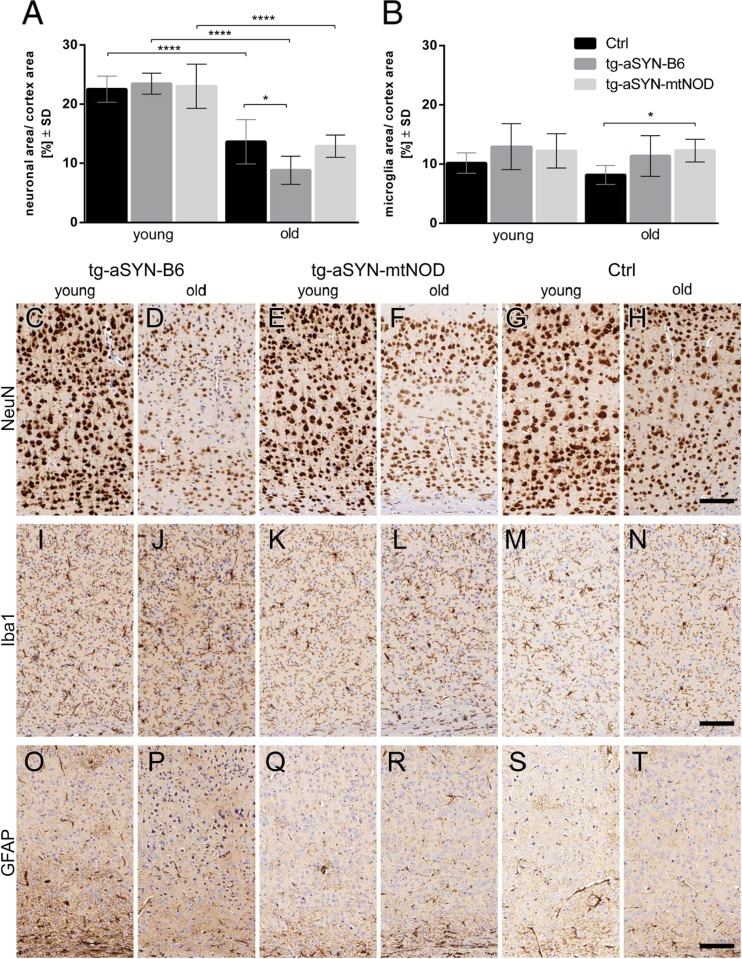Fig. 4.
Immunohistochemical analyses of young and old tg-aSYN-B6, tg-aSYN-mtNOD and C56BL/6 control mice (Ctrl). Semi-quantitative analysis of immunolabelling reveals significant differences in neuron integrity between young and old mice and especially between old tg-aSYN-B6 and old control mice (a). Examination of microglial response shows a significant difference between 300-day-old tg-aSYN-mtNOD and 300-day-old control mice (b). Young tg-aSYN-B6 (c) and tg-aSYN-mtNOD (e) mice show a more intensive NeuN-staining as compared with old mice (d and g); old tg-aSYN-B6 mice also reveal less neurons in cortical layer V. There are hardly any changes visible in the GFAP labelling (o–t), whereas Iba1 labelling shows slightly stronger microglial activity in old transgenic mice (j, l) compared with C57BL/6J control mice (n). Scale bar = 100 μm in c–t. Data is presented as means ± SD (n ≥ 5), *p ≤ 0.05; **p ≤ 0.01; ***p < 0.001 (one-way ANOVA followed by Sidak’s multiple comparison test)

